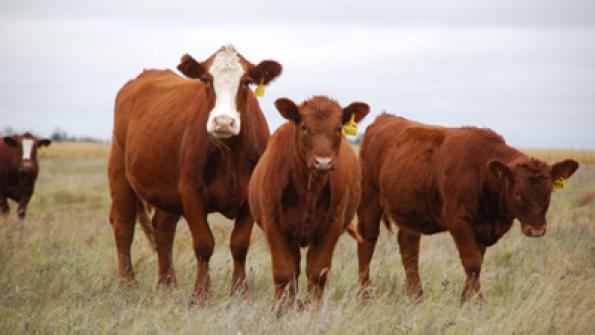Cow-calf producers will see what may well be once-in-a-lifetime markets in the next three to five years

“Never in the history of our industry have we had so many external influences,” says Tom Brink with Five Rivers Cattle Feeding, the world’s largest cattle-feeding enterprise. And, while that does throw some challenges into the management mix that cattlemen traditionally haven’t had to contend with, all in all, now is a very good time to own cows, Brink says.
In fact, now more than ever, cow-calf producers have market leverage that will allow them to crowbar themselves into profit opportunities.
Or at least that’s true for cattlemen who have a competitive cost structure and the right genetics to allow them to capture the value that the market potentially can offer. While those premiums sometimes aren’t easy money, producers who keep abreast of market opportunities will be rewarded, he told cattlemen at last week’s Range Beef Cow Symposium in Mitchell, NE.
Given the growing complexity of the industry we live and work in today, the people who are taking in information so they can understand what’s going on around them are at a tremendous advantage compared to those who may not be paying quite as much attention, he says.
In looking at the structure of the industry, he says stocker operators have enjoyed a tremendous run of profitability the last 8-10 years. That’s because they’re in a position to take advantage of the changing economics in the industry.
Five Rivers, which owns 12 feedyards and buys around 35,000 feeder cattle/week and 2 million bu. of corn/week, will see an average cost of gain (COG) somewhere in the $1/lb. region this year. “We can’t buy calves very effectively with a COG that high because we can’t compete with those outside the feedyard – the stocker operators – who have lower COG,” he says.
With feedyards largely being taken out of the calf market because of high feed prices, they’ve shifted to buying yearlings instead. That trend will only continue in the next few years, Brink says.
And that presents an opportunity for cow-calf producers with the ability and resources to keep their calves and run them as stockers.
The economics are there, he says. Looking at March feeder-calf futures compared with five-weight calf prices, he says the futures are running somewhere in the low 90s as a percent of cash calf prices. With a price curve that’s nearly flat, that means even with some death loss built in, running calves from weaning to yearling weights will yield a gross return of somewhere around $220. “You’re going to be paid somewhere around $1 for every pound you put on those calves.”
But is that profitable? “As long as you have a COG that’s below $1, which is pretty doable, you have a profit opportunity. If your COG is 80¢, there’s $60/head profit opportunity in those calves and there’s very little risk if you hedged or forward contracted.”
However, he cautions that if you’re going to add a stocker enterprise to your operation, keep in mind that that there may be discounts for heavy feeders. In surveying his managers, Brink says the ideal yearling weight for steers going on feed is 700-825 lbs. Weights from 825-900 lbs. are acceptable; 900-950 lbs. are barely acceptable; and anything over 950 lbs. is unacceptable.
“So taking those steers much over 900 lbs., you start seeing heavier discounts. And, on heifers, you can back that up 100 lbs., maybe even more,” he says.
For the feedyard segment, the continued shift toward placing more yearlings means more changes are in store, he predicts.
“It’s going to be a struggle for inventory, no doubt about it,” he says. “It means it’s going to be harder to keep feedyards full. It also means more challenges in terms of programs that tie back to the ranch because the further we get away from the ranch and the more yearlings that come off stocker operations, the harder it is to tie back to the ranch of origin.”
And, for cow-calf producers? “It’s pretty clear that the cow-calf producer has the leverage,” Brink says. “You may say you don’t feel like you have the leverage, but look at the prices you’re getting for your calves. And, as time goes forward, I think that’s going to get more extreme.”
In fact, he says $2/lb. for a five-weight calf is very possible. “I think we’ll see calf prices that high within the next year, two years. If we had a little relief on the grain side, we’d be there now.”
That means, he says, “The next three to five years could well be a once-in-a-lifetime period to be in the cow business, if you have a competitive cost structure, and the genetics and management to give you the ability to sell calves at least at the average of the market, and hopefully at a premium. It’s a pretty good time to own cows.”
For more on Five Rivers, read:
• http://beefmagazine.com/beef-quality/1101-feeders-purchasing-cattle/index.html
• http://beefmagazine.com/1116-five-rivers-cattle/index.html
About the Author(s)
You May Also Like



